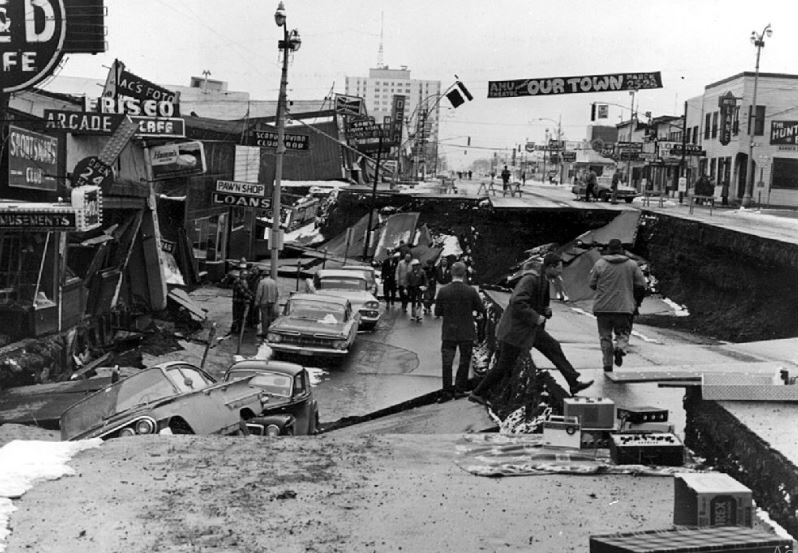Alaska has always been one the most earthquake-prone areas in the northern hemisphere and due its this geological characteristic the region managed to record some of the most impactful quakes of history.
March 27th, 1964, the Great Alaskan earthquake occurred in southern Alaska which shook the entire region for almost 5 minutes, consequently causing damage to life and property from Kodiak Islands to northern California. With a recorded magnitude of 9.2, the quake is the second-largest earthquake in history.
The Great Alaskan earthquake or the Good Friday earthquake shook the Prince William Sound region of Alaska March 27, 1964 at 5:36 pm local time. This earthquake and tsunami that followed took 131 lives (tsunami 122, earthquake 9), and caused property damage of nearly $3 billion (in 2023 dollars; equivalent to $311 million in 1964). The towns of Anchorage, Chitina, Glennallen, Homer, Hope, Kasilof, Kenai, Kodiak, Moose Pass, Portage, Seldovia, Seward, Sterling, Valdez, Wasilla, and Whittier were among the most affected areas.
This quake ensued a tsunami that destroyed numerous towns around the Gulf of Alaska, and caused serious damage at Alberni and Port Alberni, Canada, along the West Coast of the United States killing 15 people. Waves with a maximum height of 67 meters were recorded in rivers, lakes, bayous, and waterways along the Gulf Coast of Louisiana and Texas. The effect of the quake was also recorded on tide gages in Cuba and Puerto Rico countries close to the southeastern coast of the US.
The impact of the earthquake was felt over a large area of Alaska and in parts of the Yukon Territory and British Columbia of Canada.
